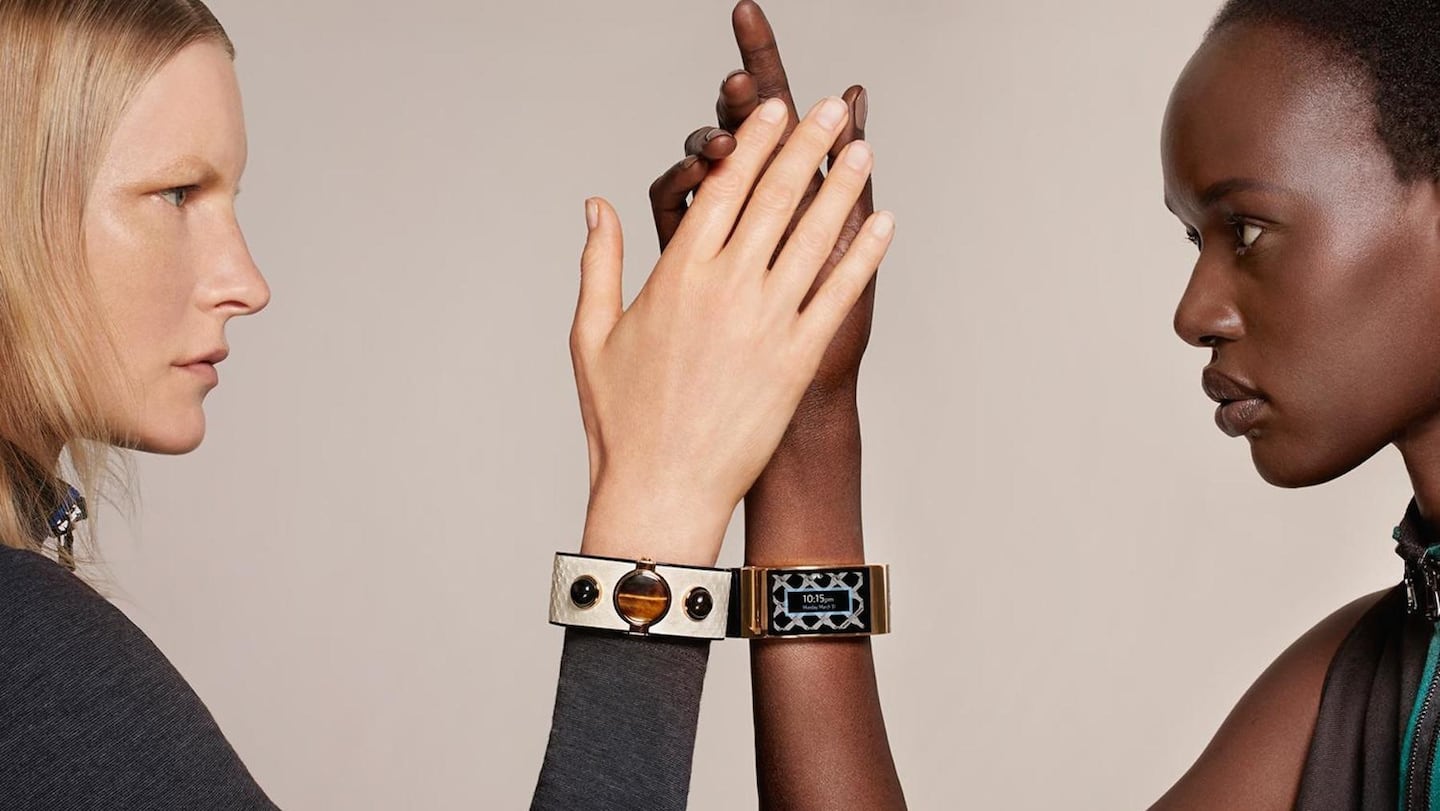
The Business of Fashion
Agenda-setting intelligence, analysis and advice for the global fashion community.

Agenda-setting intelligence, analysis and advice for the global fashion community.

SANTA CLARA, United States — Wearable technology is creating a new space for innovation and attracting the attention of a diverse and growing ecosystem of players, from Silicon Valley to Madison Avenue and fashion megabrands to small designers with big ideas who are willing to push the boundaries of what's possible. Even casual observers can't miss the eye-grabbing headlines about Apple's $10,000 smartwatch or recent moves by TAG Heuer and Gucci.
With retail revenues from wearable devices projected to exceed $53 billion by 2019, according to Juniper Research, there is little reason to wonder why so many people are watching the wearables space. But if wearables are going to make the transition from high-tech novelty to everyday necessity, technology companies need to partner with leading designers and fashion brands to produce products that deliver real value without sacrificing style.
Today, we are at a new inflection point when it comes to integrating technology into apparel and accessories. But the reality is technology and fashion have always been inextricably linked.
Perhaps one of the earliest examples of technology ‘disrupting’ fashion was in the 13th century, when Italian artisans crafted the first pair of eyeglasses. Later, thanks to advances in manufacturing during the industrial age, clothing became a mass-produced good for the first time. Even in the past century, we’ve seen the invention of entirely new types of fabrics like nylon and polyester. Today’s yoga pants craze wouldn’t be possible without the chemical company DuPont.
ADVERTISEMENT
Consumers don’t think that wearing glasses or buying a sports bra is embracing technological innovation; they are merely buying something they need and enjoy wearing. This marriage of function and form is exactly where the wearable category is headed.
The difference today is the acceleration of Moore’s Law. In 1965, Intel founder Gordon Moore predicted that the number of transistors that could be fitted onto a given silicon chip would double every year and thereby help to enable lower costs and other benefits. Intel’s adherence to that vision has meant that processing capabilities have become exponentially more powerful, while the devices themselves would shrink in size and offer other innovative benefits.
The principles behind Moore’s Law have become shorthand for the kind of rapid technological change that has opened up a wide range of new market opportunities, including embedding silicon-based technology into everyday apparel and accessories, like our clothes, watches, jewellery and even our glasses. And designers and technologists alike are beginning to ask fundamentally new questions about a space that is just in its infancy — yet has seemingly limitless applications.
Until now, the technology industry has largely been trying to go it alone. But many of us are realising that developing great technology isn’t enough. The end product must be attractive and seamlessly integrated into the user’s life, regardless of whether there is an on-off switch.
Tech companies are also facing another familiar challenge. Nielson reports that women dominate almost every major retail spending category — another challenge for a sector with well-documented difficulties attracting and retaining female talent.
To resolve these and other complex issues and accelerate the wearable tech opportunity, we need to foster a new ecosystem of players and build stronger partnerships between technologists and fashion designers.
Intel’s strategy already includes collaboration with fashion and luxury players like Opening Ceremony, Barneys New York, the CFDA, Luxottica, Oakley, Fossil and TAG Heuer. These brands work with us to bridge the gap between what is technically possible and what consumers actually want.
It’s exciting to watch the next iteration of the long-standing marriage between fashion and technology. And with the rapid advances taking place in the wearables category today, it won’t be long before the notion of smart-clothing is as commonplace as running shoes and smartphones.
ADVERTISEMENT
Ayse Ildeniz is the vice president and general manager for business development and strategy for Intel's new devices group.
The views expressed in Op-Ed pieces are those of the author and do not necessarily reflect the views of The Business of Fashion.
Join the discussion on BoF Voices, a new platform where the global fashion community can come together to express and exchange ideas and opinions on the most important topics facing fashion today.
Successful social media acquisitions require keeping both talent and technology in place. Neither is likely to happen in a deal for the Chinese app, writes Dave Lee.
TikTok’s first time sponsoring the glitzy event comes just as the US effectively deemed the company a national security threat under its current ownership, raising complications for Condé Nast and the gala’s other organisers.
BoF Careers provides essential sector insights for fashion's technology and e-commerce professionals this month, to help you decode fashion’s commercial and creative landscape.
The algorithms TikTok relies on for its operations are deemed core to ByteDance overall operations, which would make a sale of the app with algorithms highly unlikely.